The Story of Dugena – Or What is a Poor Man’s Heuer?
The watchmaking industry was really a different story back in the days...
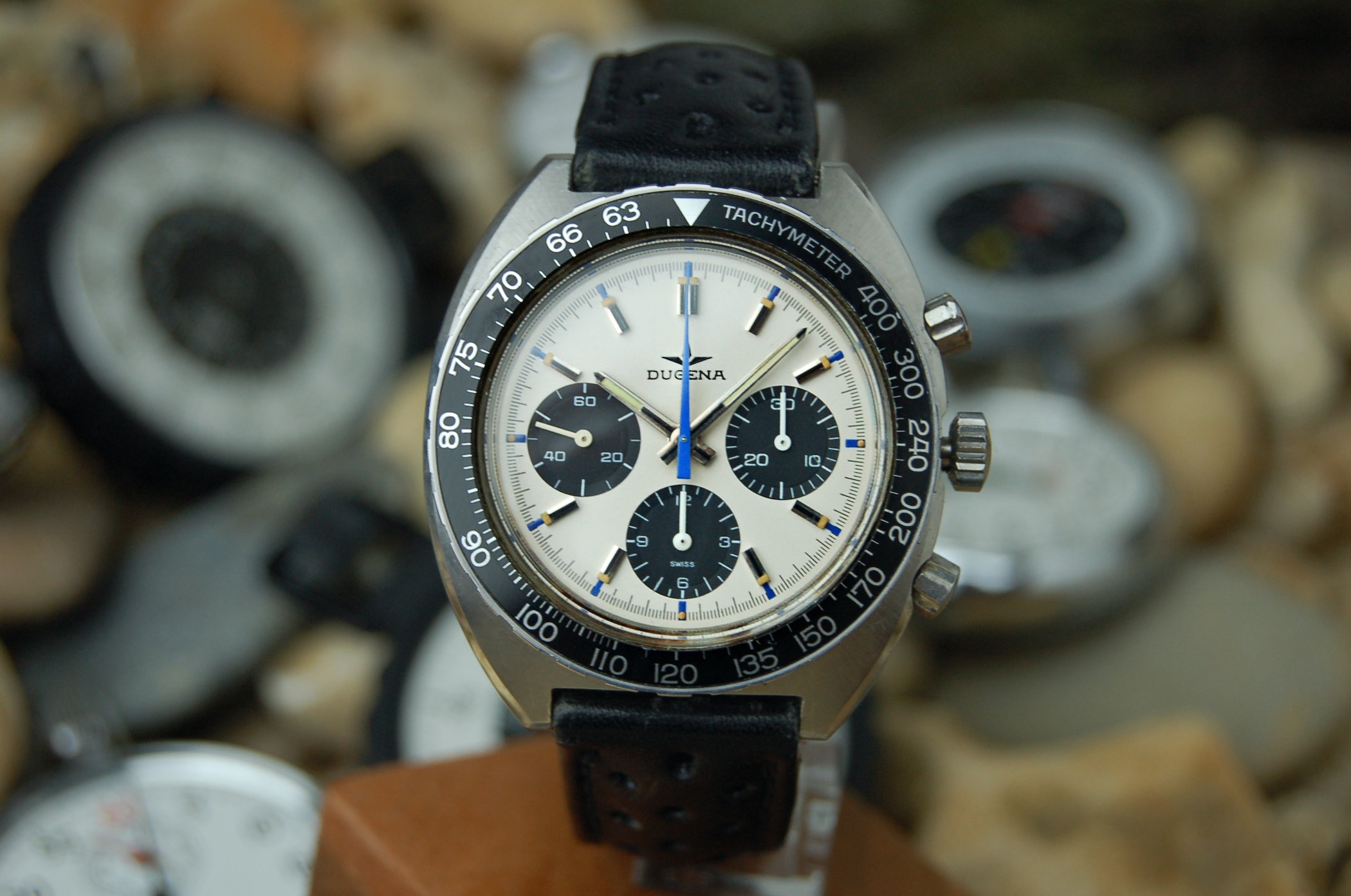
“Poor Man’s Heuer” is a term often used in the vintage collector’s world. It refers to a sport or tool watch that was made in the 1960s and 1970s, with design or style cues from racing Heuer watches, but with another brand stamped on the dial. Whether it’s the bright colours to accent the dial and hands, the large oversize cases with radial-brushed finishes or racing car references, these were features originally used by Heuer, one of the most prolific chronograph manufacturers of the last century, which also produced watches under other names. The concept of “Poor Man’s Heuer” originated in the online Heuer community as “a joke”, something to call a watch, that while not having been made by Heuer, has the look and feel of a vintage Heuer. And today, we’ll look at one of these watches, the Dugena Siffert Chronograph – which certainly has something to do with the Heuer Autavia.
This situation occurred way before the brands started engaging with historic pieces. What is now agreed by collectors was that Heuer did actually make watches for other companies based on their own designs. Whether it was because their designs were so new and recognizable that other manufacturers sought to emulate them or that they entered into co-branding arrangements to push sales, no one is sure. Heuer definitely made watches for marketing purposes, entering into a promotion with Viceroy Cigarettes, a popular but struggling American brand. The public was encouraged to collect tabs from the packaging of cartons and then send them together with only USD 88 to claim their Autavia Viceroy Chronograph. Models were also made for Zodiac and Primato, both using Heuer designs, as were watches sold at Sears & Roebuck under the name “Tradition” and “Sears”.

Why did Heuer do this?
Producing watches with similar designs but with a different name on the dial seems, to many of us, a sure way to dilute the brand. Perhaps Heuer was somehow looking to create a new school of design for watches and wanted to be seen as prominent trendsetters. What is interesting is that Heuer made watches not just in the style of its own collections, but in some cases, we are talking about the exact same watch, just with a partner’s name printed on the dial.
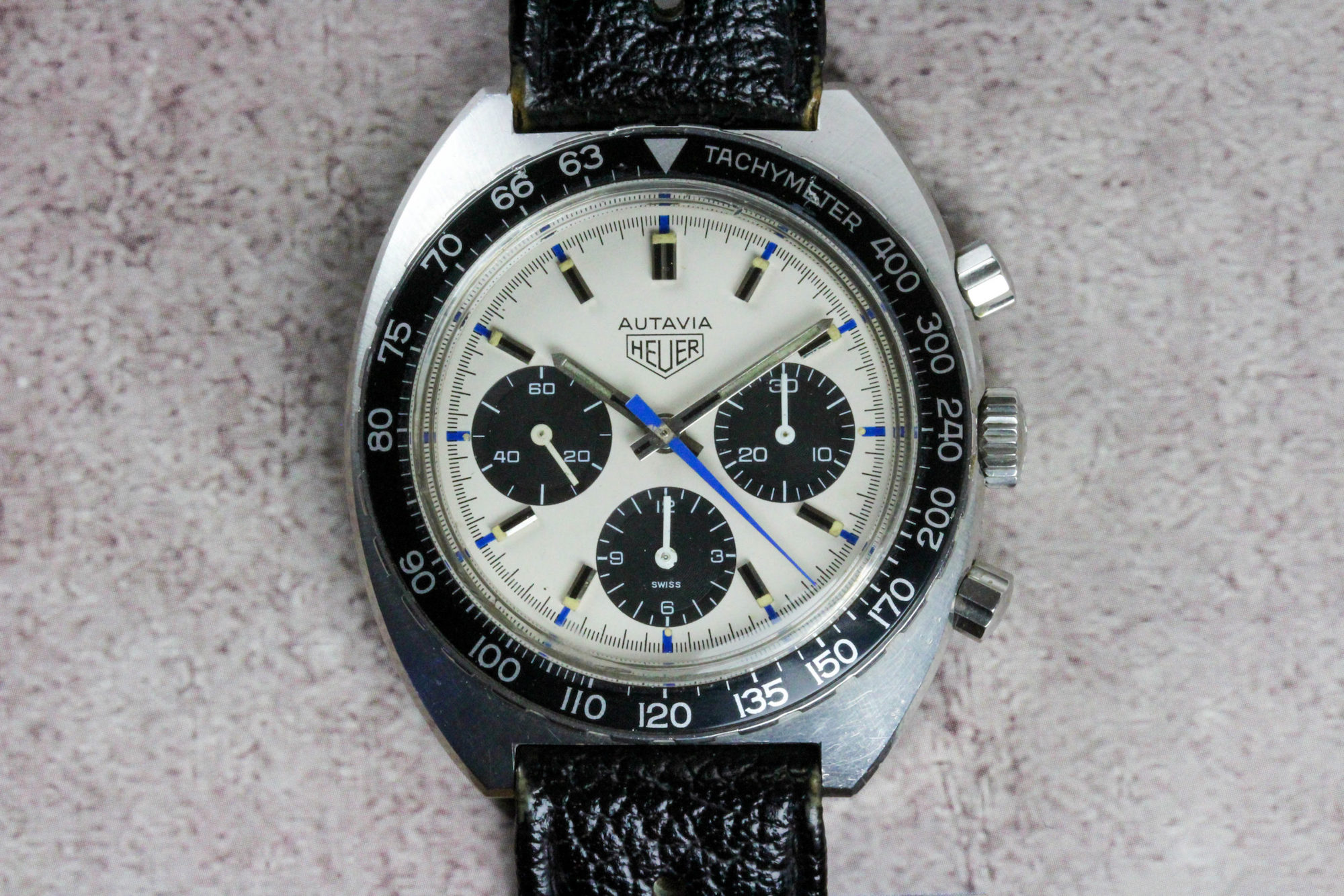
Such was the case of the 12-hour, hand-wound chronograph made by Heuer for a popular German brand back then, Dugena. This specific watch has Dugena printed on its dial but, in fact, it is a Heuer Autavia ref. 73663 from 1971, with the distinctive blue chronograph hand, a white dial with black sub-counters and a hand-wound Valjoux 7736… A watch that most of us know as the Autavia “Siffert”. This specific model was named after Jo Siffert, a Swiss racing driver sponsored by Heuer in the late 1960s. The style of this Autavia somehow started the trend for large watches in the early 1970s, with its typical pilots’ case. At 41mm in diameter, it was just slightly wider than contemporary watches, but due to its shape with integrated lugs, there was a lot of extra steel on the case. A large notched bezel and a height of 13mm ensured that it really stood out on the wrist.
Dugena…?
Dugena was a group of watch manufacturers based in Germany, with more than 100 years of history. Back in 1917, multiple smaller businesses were grouped as a collective of companies under the name Deutsche Uhrmacher-Genossenschaft Alpina-Dugena. They supplied watches under the brand name Alpina to the German armed forces during WWII – like the field watch below, which met with the Wehrmacht wartime specifications. This watch featured a chrome-plated metal case, fixed lugs, a 15 jewel movement by Marc Favre and a stainless steel screw-on caseback stamped DH “Dienstuhr Heer” – which could be translated as Army Service Watch.
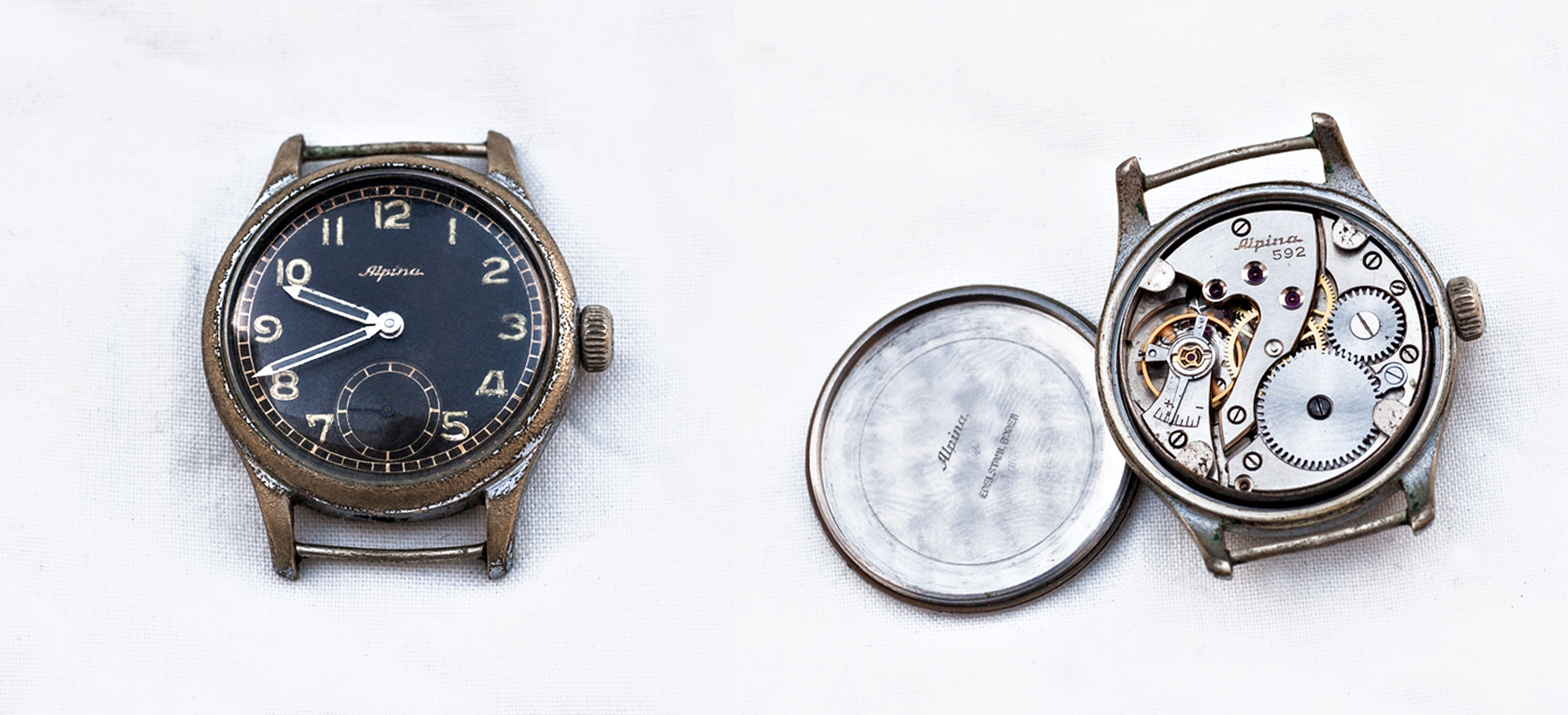
In the second half of the 20th century, Dugena enjoyed great success riding the wave of the German post-war economic miracle. The brand managed to survive the troubles of the quartz crisis by diversifying and establishing early high-quality quartz collections, which by the early 1970s made it a premium manufacturer in Germany.
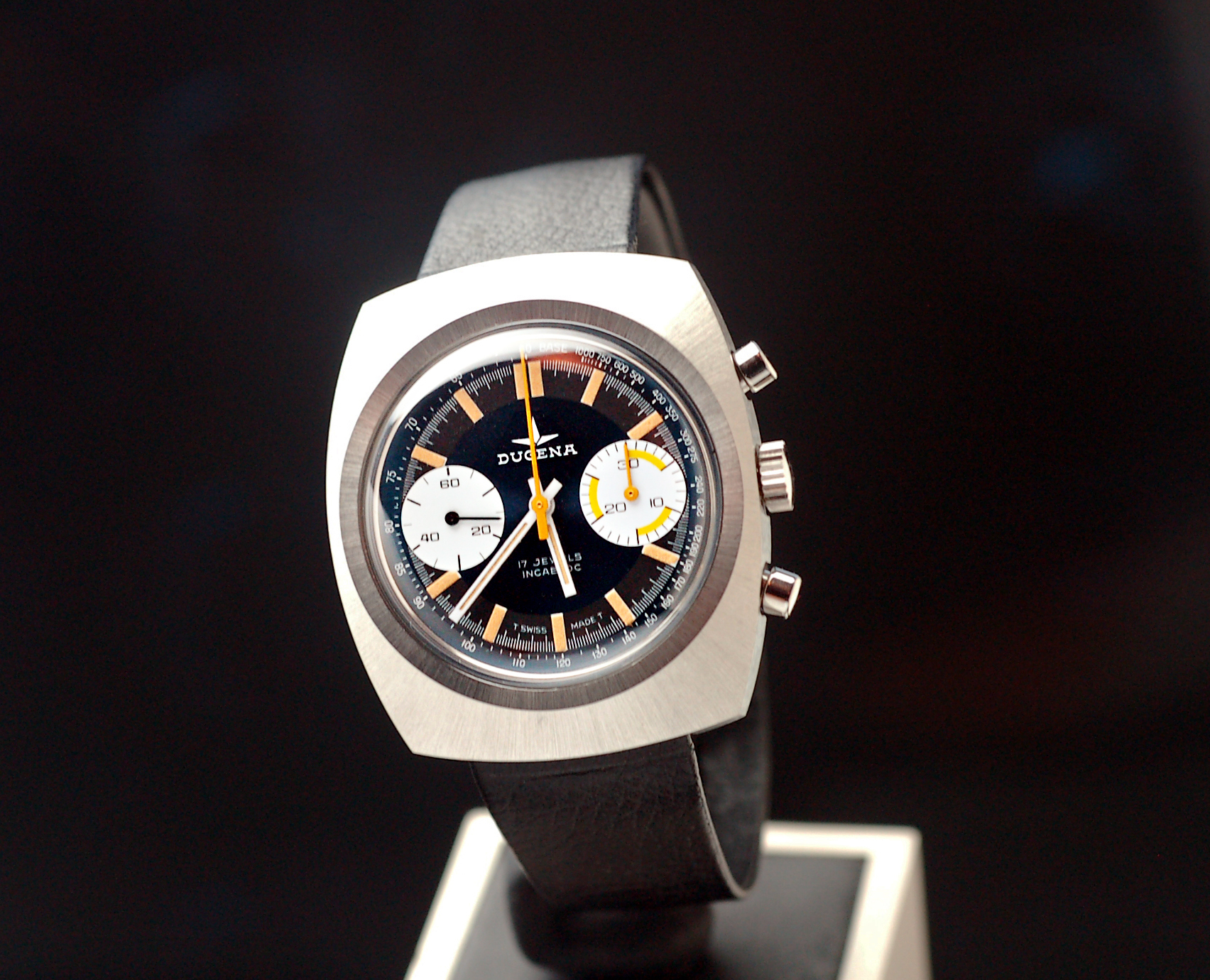
Not being as well known as Heuer outside of Germany, the Dugena still made some great sporty chronographs for racing, sailing and sports watch markets. Although mostly equipped with Valjoux hand-wound movements for its chronographs, and even micro-rotor movements for some of its watches, it is unsure whether Dugena ever made any of its own movements per se.
Taking other design cues from Heuer racing-inspired watches, Dugena did make some excellent case designs like the two-piece case Dugena ‘Carrera’ above, with a central container inserted into an external case – kind of like a pocket watch for the wrist.
The 1970s were a time of ‘out with the old and in with the new’. Watches were no longer just a round case, as they had been since the first pocket watch was strapped on the wrist. I think Dugena embraced this modernism, creating completely new styles of watch cases, sometimes double the size of a standard watch, which shows that the company was in good health and could afford to take risks and buck the market a little. The trend for larger watches started by Heuer, Omega, Doxa (and more brands) pushed lesser mass-market brands to follow.

Above is a Dugena Subic, an early 1970s chronograph that features one of the flattest cases of any chronograph produced during that time – this shape was made to attenuate the necessary height for the chronograph movement. At 40mm with 22mm lugs and a crown that disappears into the case side, this case might have been completely new at the time and certainly considered very fashionable. Hardly any watch brands used this technique in their case production, as it was easier to build an asymmetric case to provide shoulder protection for the crown. The result is a very futuristic watch. Yet, even though Dugena was prepared to take risks with its cases, it played safe with the hands, which are taken from the sub-registers of the 1974 Heuer Silverstone, a watch worn by famous F1 drivers like Clay Regazzoni.
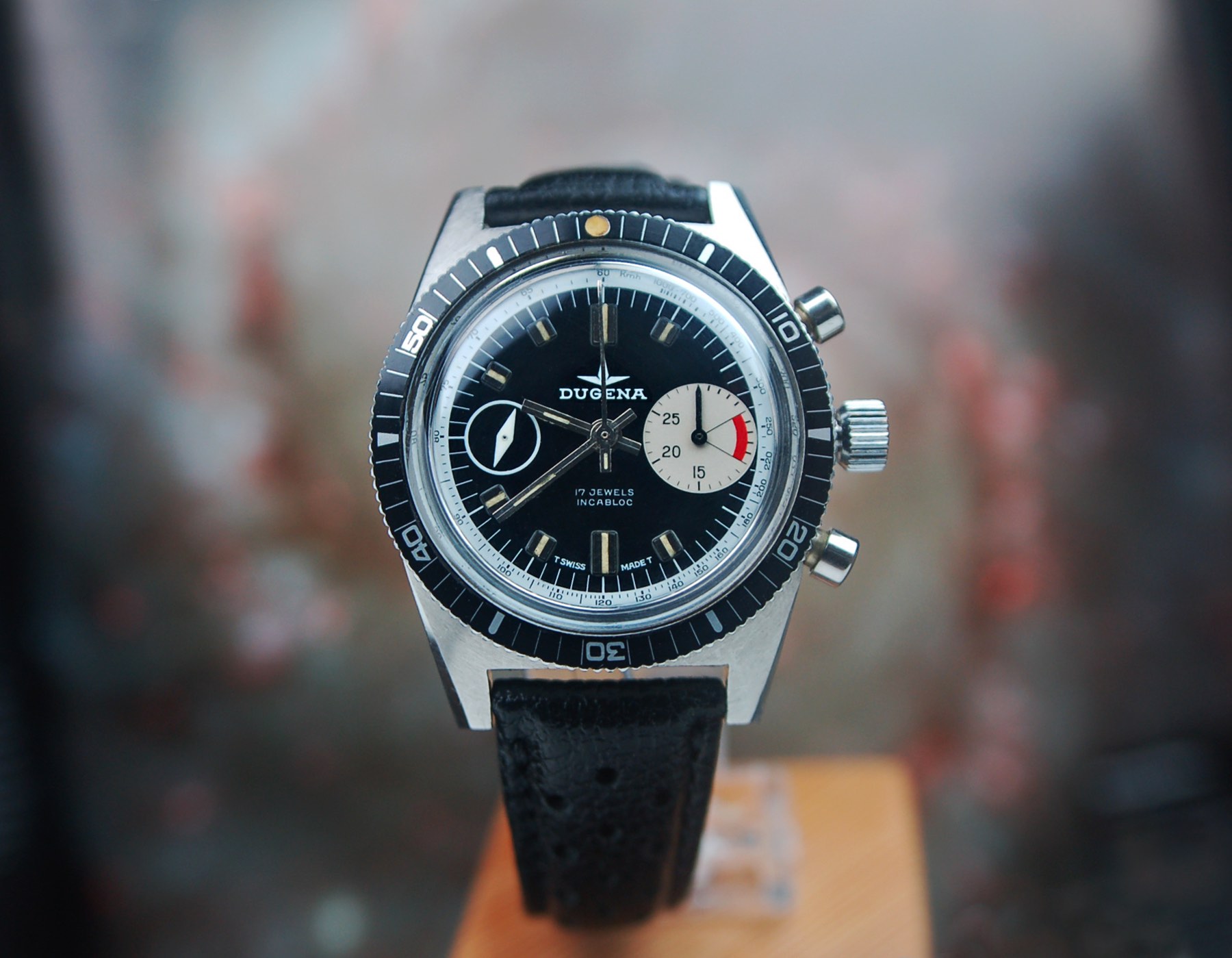
Dugena seems to have been quite clever in terms of diversification. By reaching out to Heuer the brand was able to create a distinct sporting look, which would associate its watches with the promotional work Heuer was doing at the time with Formula One Racing. While making a successful quartz line at a lower price point for the general public, which was a much larger market than the specialized chronographs, it still continued to make traditional round watches with flair. The Landeron-powered 1960s Dive Chronograph above, for instance, takes design cues from the famous Aquastar Deepstar dive chronograph, with the spinning diamond seconds hand.
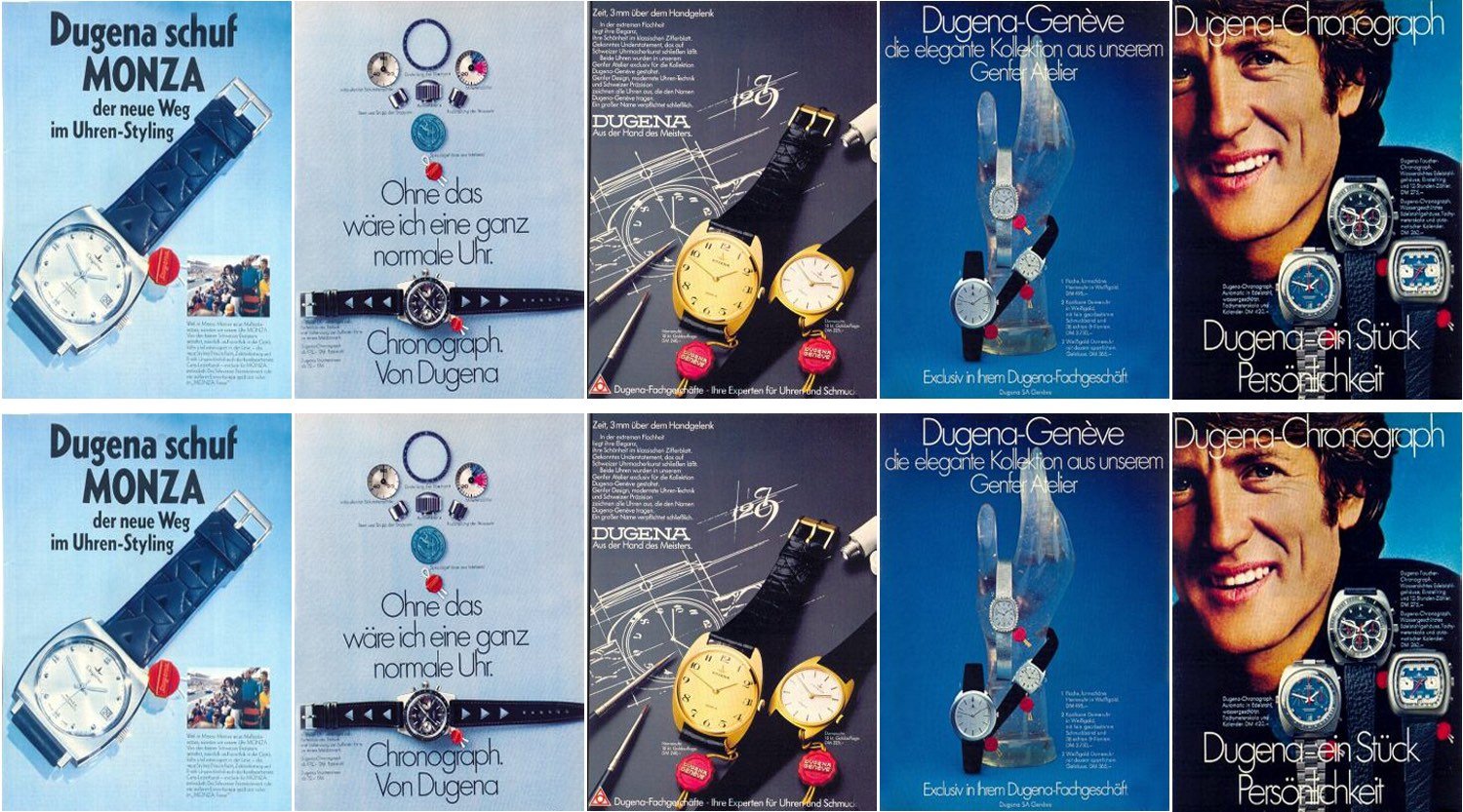
This article started with me explaining what the term ‘Poor Man’s Heuer’ means, but during research in my own archives, I seem to have told the story of a manufacturer’s diversification and survival strategy during the tough economic times endured by most watch companies, as quartz watches were hitting the market. In the 1970s some camped on their position while the quartz revolution was on its way… Some others changed their business model. By embracing change and diversifying early enough with quartz to withstand the poor market returns, Dugena chose to cover more market areas and used external suppliers to reduce costs… And it proved rather efficient, as it continues to trade today, albeit in a different guise.
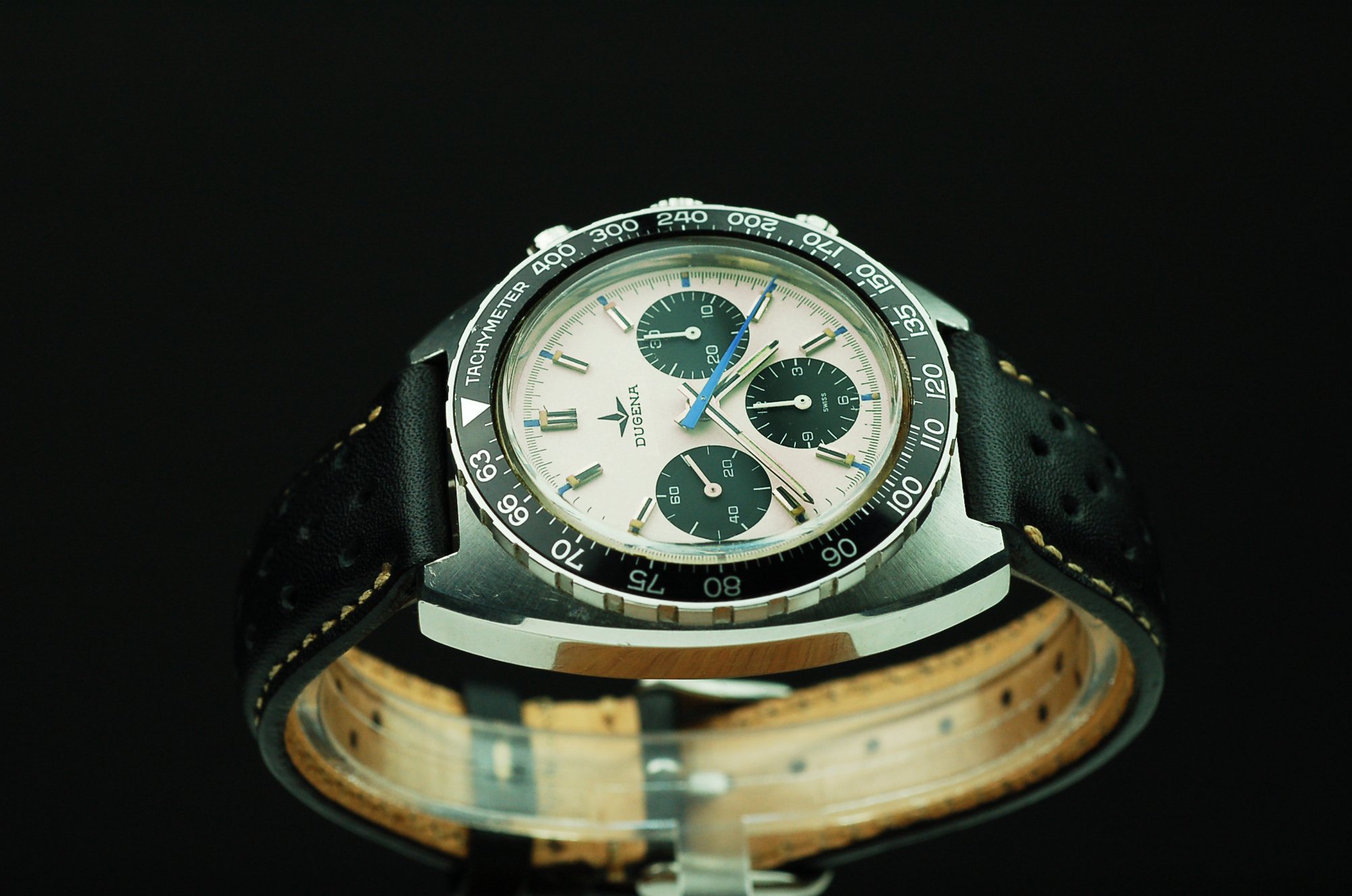
Meanwhile, as more of these watches are discovered, the situation will continue to confuse collectors, whether it is those popping hands and use of emergency orange paint, or if they are out-and-out sheep in wolf’s clothing like this Dugena Siffert Chronograph.

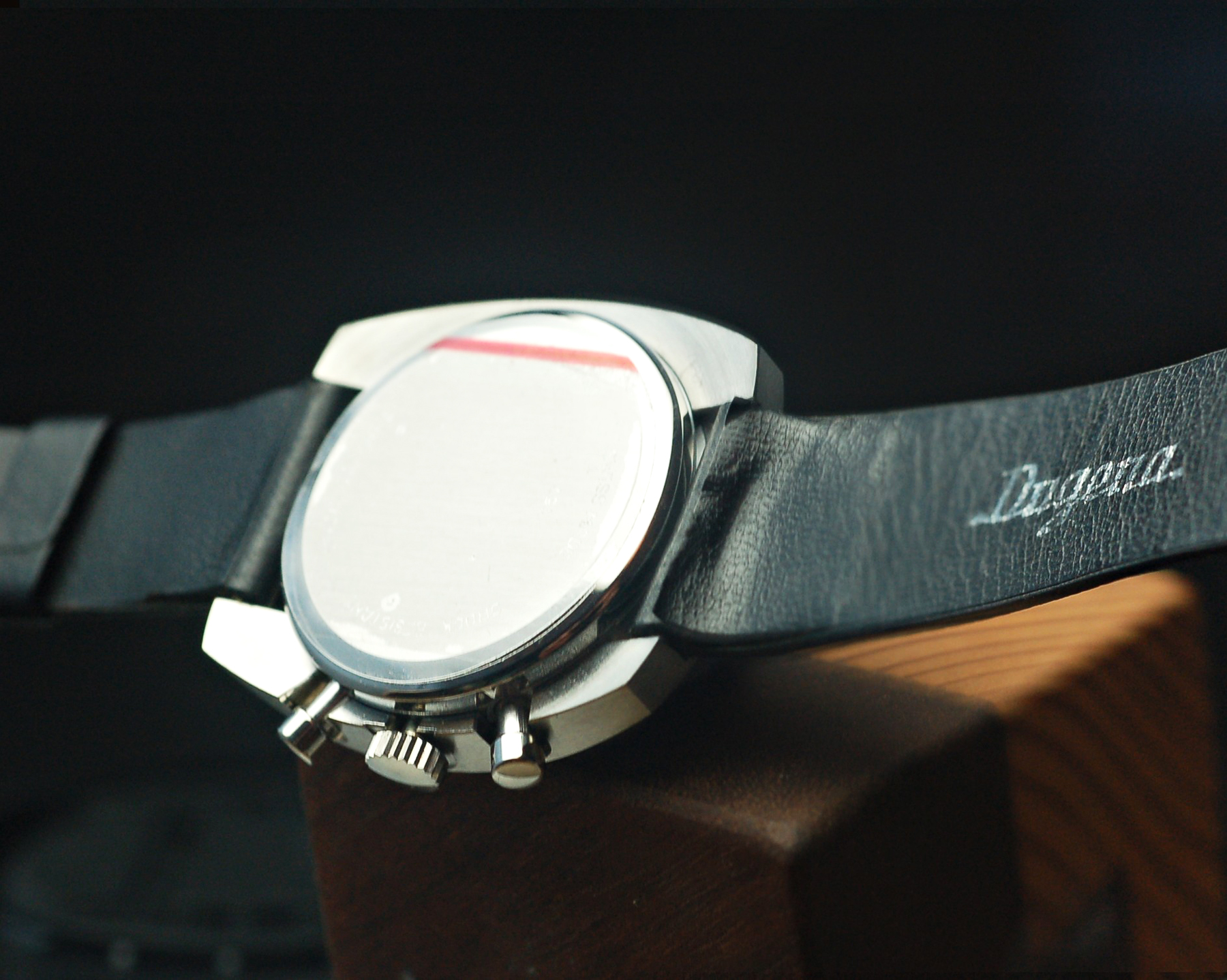



5 responses
I have a Sears Tradition chronograph from around 1970. I recently installed new pushers, quite a challenge to do at home that required drilling and tapping the holes to fit the available pushers. I don’t think mine was made by Heuer ‘though. Not really sure how to tell either way.
Interesting article about a brand of which I knew nothing, You just have to look at watches for sale on Ebay to see endless brands that you have never heard of or had forgotten, it gives an idea about how bad it was for a lot of swiss manufacturers.
Hi Randy, look you watch up at On The Dash and search on the forum for further information cheers Alistair
I like Dugena watches – niche and a little bit exlusive with long life design
I own a Dugena Subic, and it gets a fair bit of wrist time. An excellent watch with a workhorse VJ7733 movement. One small note to your article on this model… the lug width is 20mm, not 22mm. I have it on a tapered mesh bracelet, which wears very comfortably.